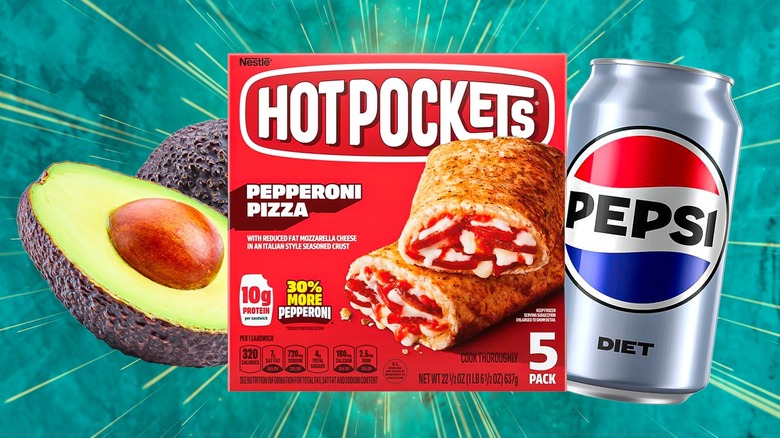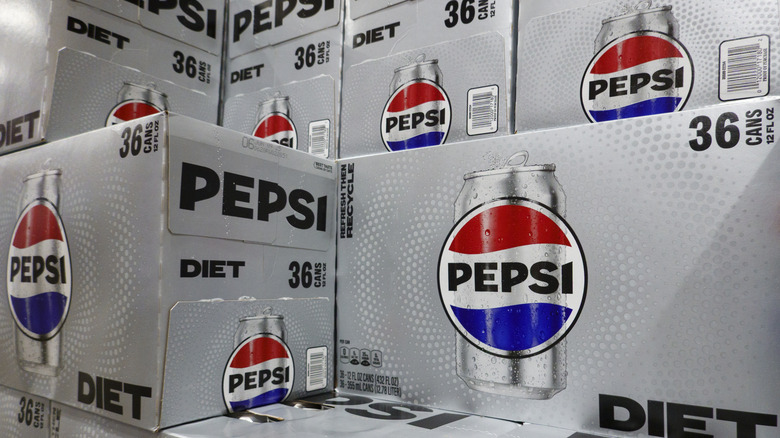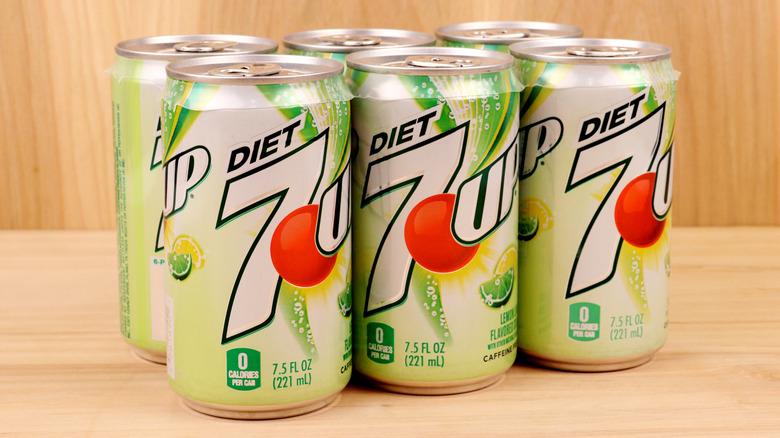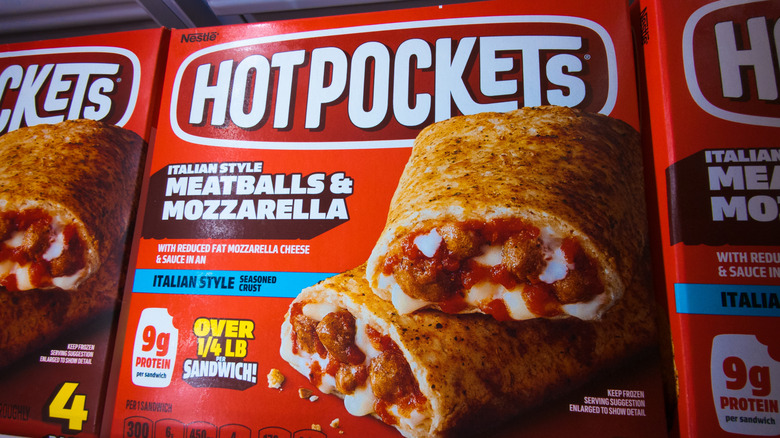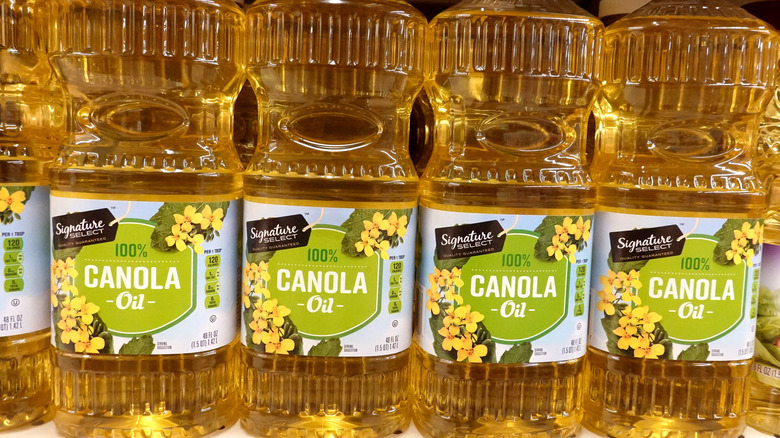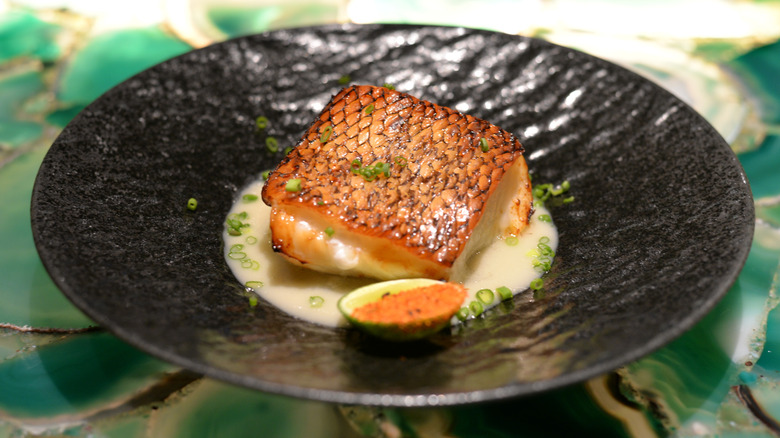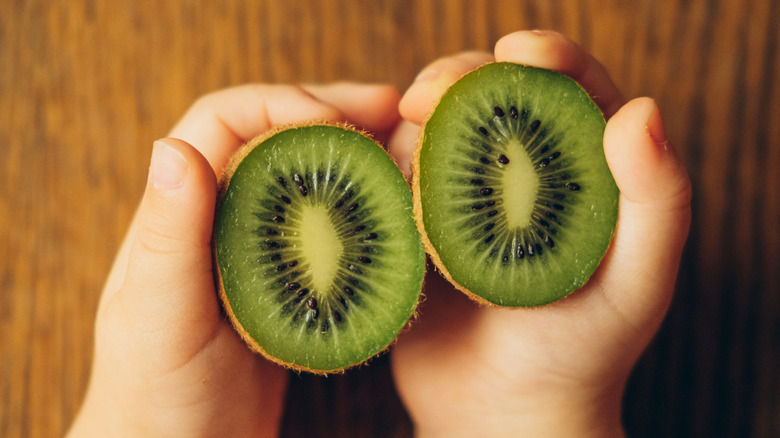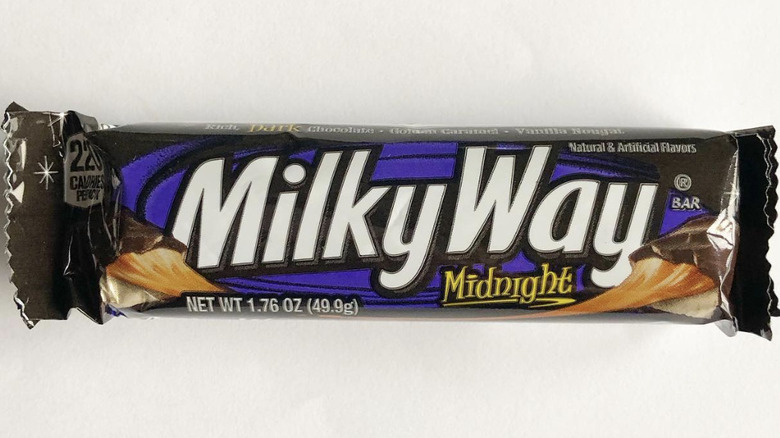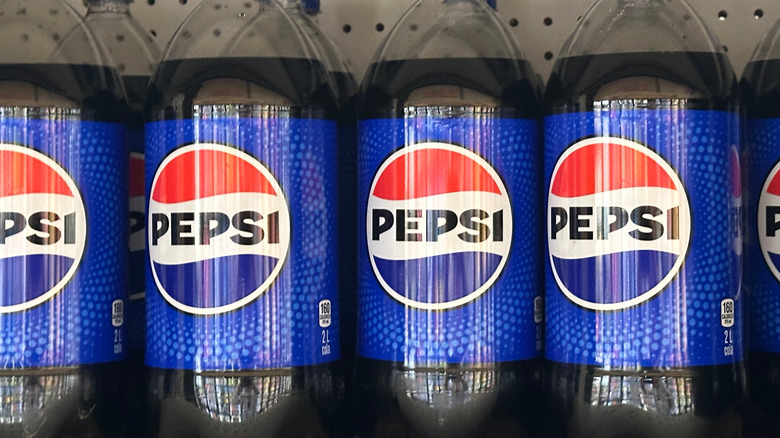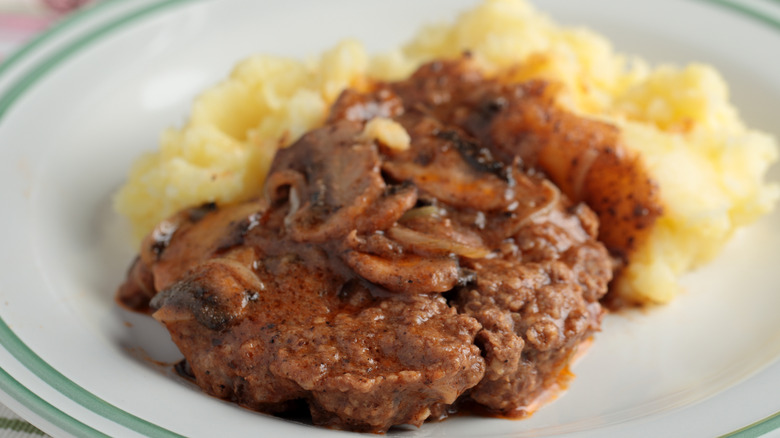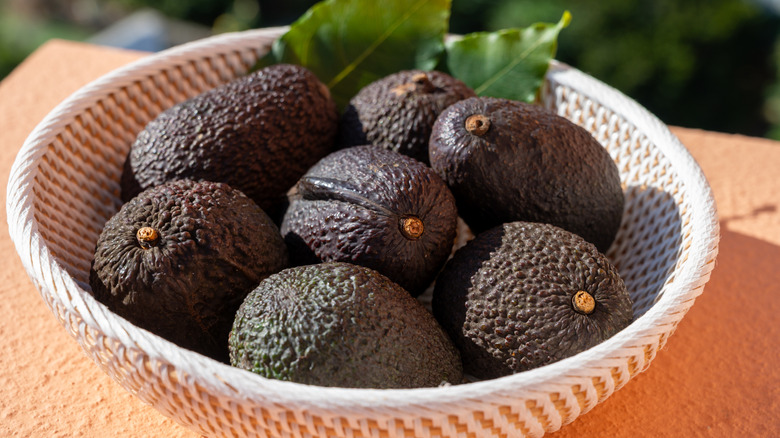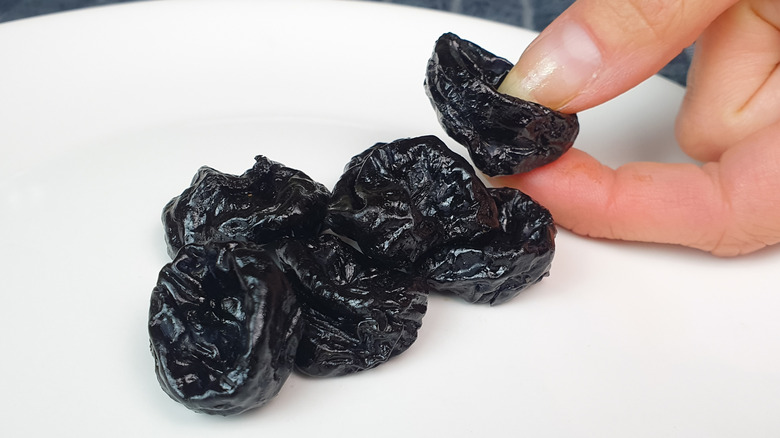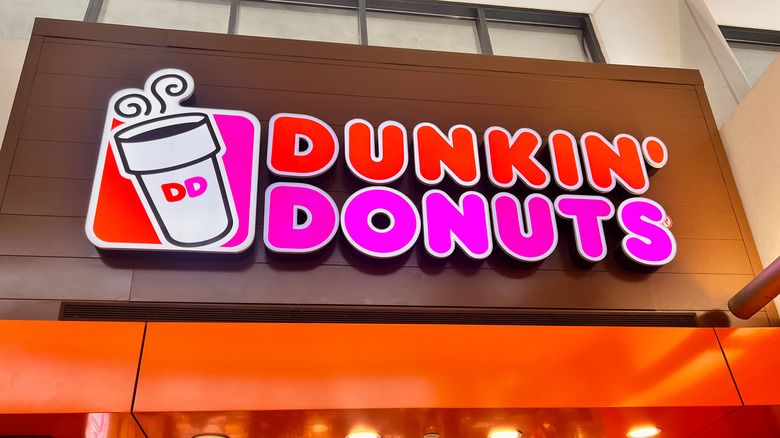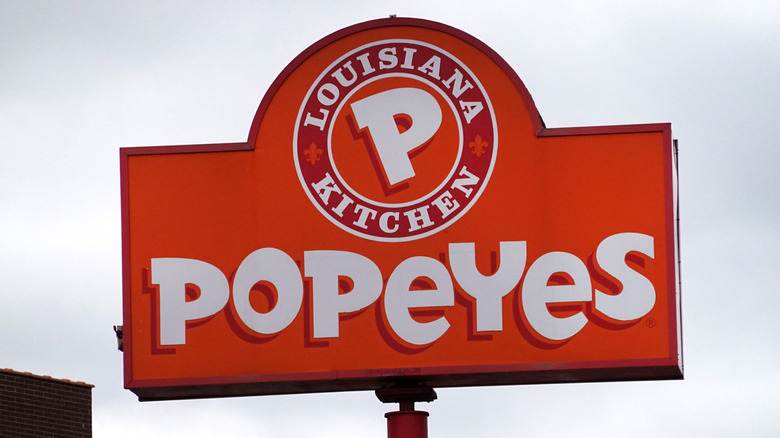Familiar Foods That Flopped Until They Changed Their Name
We may receive a commission on purchases made from links.
One could argue that any food is only as good or as powerful as its marketing. After all, how could anybody even taste a piece of unfamiliar fruit, exciting carbonated beverage, or revolutionary frozen food if they don't find out about it? The first form of marketing is branding, and the first form of branding is coming up with a name. Every natural product, lab-created entree, or fast food enterprise has to have a name that will entice and intrigue potential consumers, while also managing to be original, catchy, and inoffensive.
That's apparently easier said than done. There are lots of foods and food products that have reached ubiquity or household name status in part because their name made it so easy for customers to get on board. However, the creators and cultivators of those very same things struggled at first to devise a name that would actually work. Their earliest attempts are clunky, hokey, corny, or just plain bad — so terrible that they nearly doomed their creations before they could even have a chance. Here are some well-known supermarket and food scene staples that got a second chance at life after abandoning their initial names.
Diet Pepsi
After the mainstream success of No-Cal, a soda made and marketed for diabetics in the New York area in the 1950s and 1960s, Royal Crown became the first major American soft drink company to release a sugar-free cola, Diet Rite. Within a year of that product's 1962 launch, larger competitor Pepsi wanted to get in on the growing and substantial market sector for the sugar-averse: people with diabetes, but mostly individuals trying to limit their calorie intake or to lose weight. Pepsi called its artificially sweetened, one-calorie, sugar-free beverage Patio Diet Cola.
Pepsi still wasn't convinced that Patio would be a big seller. While it stamped the words "dietetic" and "sugar free" on bottles and cans to help land the target consumer, Pepsi only minimally branded Patio as one of its own, with "product of Pepsi-Cola" appearing in small letters on containers, not wanting to taint the company name if it were to fail. But after realizing that the diet soda sector was only growing, Pepsi went all in on Patio by renaming it. In 1964, after about a year in stores, Patio Diet Cola was renamed Diet Pepsi.
Diet 7Up
7Up's main selling point used to be lithium, although when the 1960s rolled around, 7Up was the biggest soda company and brand in the U.S., trailing only Coca-Cola and Pepsi-Cola. It embraced the diet soda phenomenon early, bringing to the market a sugar-free, lemon-lime soda in 1963 with the almost completely nondescript title of Like. Linked to its full-sugar counterpart only tangentially, the bottles proclaimed it to be "The Diet Drink of Seven-Up Quality" while also noting that it was made with artificial sweeteners and to be used as a dietary aid. In other words, it was "like" 7up but it wasn't exactly 7up.
Like went on to an undistinguished sales record in the 1960s, until 7Up completely pulled it off the market in 1969. The drink had been made with one of the most common noncaloric sugar substitutes used in diet sodas at the time, calcium cyclamate. After lab tests suggested that the chemical could potentially cause cancer, 7Up reformulated the drink and re-released it in 1970 under a brand new and thus untarnished name: Diet 7Up.
Hot Pockets
One of the best frozen foods, and an enduringly popular one at that, Hot Pockets look like the offspring of a McDonald's Hot Apple Pie and a small calzone. If prepared correctly (you can air fry Hot Pockets as well as microwaving them), they offer volcanic but gooey, saucy, cheesy, and savory full meals in handheld form. After emigrating to the U.S. from Iran, brothers David and Paul Merage formed Chef America Inc. in 1977 with the express desire to make and bring to market a hot, pocket sandwich that would stay crispy even after being heated in that novel kitchen gadget of the era, the microwave. In 1980, the Merages' first take, named the Tastywich, debuted with the cardboard crisping sleeve (their patented invention) included.
The Tastywich didn't really hit, but Chef America Inc. got its flagship product into snack bars and fast food restaurants in 1983 under another name: Hot Pockets. A couple years later, Hot Pockets were sold in grocery stores for the first time.
Canola oil
Not all cooking oils are created equal, and a supermarket's section devoted to those may contain choices like corn, avocado, olive, and canola. The last differs from the other oil sources because there's no such plant as a canola. The name is a portmanteau, combining the first three letters of Canada, where the product was created and from where it's still largely made and exported, and "ola," which just means oil.
Canola oil (it's actually redundant to say "oil") is made by pressing seeds of three different Brassica plants, a family that also includes mustard greens, cabbage, and broccoli. One canola seed contains about 45% oil, or around twice that of a soybean, making its sources very abundant and efficient. One of the Brassica entries crucial to canola is Brassica rapa. That's also known as rapeseed oil, and when canola was perfected in the 1970s, the Rapeseed Association of Canada moved away from using that term mainly to differentiate its new product from the old one. It was an added bonus that it allowed for the disuse of a term that included another, uglier word.
Chilean sea bass
It's no wonder that it's a staple of fine dining menus and one of the best types of fish to use in ceviche – Chilean sea bass offers a velvety, rich, and sweet flavor, and it's truly one of the better whitefishes that can be widely found in the United States. Popular only since the 1990s, Chilean sea bass didn't exist, at least under that name, before 1977. That's when seafood industry player Lee Lantz was searching for new fish to sell, and while looking at fishing boats in Chile, he saw a five-foot-long fish with prominent teeth. He asked the boat's workers what it was, and they explained that it was "cod of the deep," a deep-sea creature that they'd caught accidentally in pursuit of more marketable fish.
What Lantz had seen was really a Patagonian toothfish, also known as an Antarctic toothfish. After persuading some restaurants to stock it — Chinese food establishments embraced it as an inexpensive substitute for black cod — it slowly worked its way into fancy American restaurants. That's in major part because Lantz didn't market it as a toothfish. After dismissing ideas like South American sea bass and Pacific sea bass, he came up with Chilean sea bass. It's highly inaccurate: It's not bass, it's a species of cod ice fish, and most of what's caught today is found in and around the Arctic Ocean.
Kiwifruit
New Zealand might bring in more than $1 billion each year by exporting kiwifruit. Covered in an unappetizing brown fuzz that contains a strikingly green-colored and black-seeded sweet and tangy fruit inside, the kiwifruit, or just kiwi, can be found in most any American supermarket, but only since the 1970s. Gooseberries have always been an obscure fruit in the U.S., and so were Chinese gooseberries, the initial, western name bestowed on the product known in China as mihoutao, roughly "macaque fruit," as the primates there love to pick them off trees and eat them. In 1904, the head of a New Zealand private school brought Chinese gooseberry seeds back from a trip to China and they were planted in the town of Whanganui.
While American and British attempts to cultivate the plant had failed, it flourished in New Zealand, so much so that in 1959, New Zealand exporters started marketing the item as kiwifruits. The name change came because of the lack of knowledge of gooseberries, and after rejecting "melonette," fruit companies opted to identify the product with New Zealand itself. The name kiwifruit is derived from the kiwi, the national bird of New Zealand.
Milky Way Midnight
An instant hit when it arrived in shops across the U.S. in 1924, Milky Way was intended to be a candy bar form of a chocolate malt milkshake, with milk chocolate coating a spongy nougat interior. Two years later, manufacturer Mars altered the Milky Way, selling two types of bars in one package: a chocolate nougat enrobed in regular chocolate, and vanilla nougat covered in dark chocolate. Then Mars split them up in 1936, with the former becoming the regular Milky Way, and the vanilla-and-dark blend launched as a new, branding-free candy bar altogether called Forever Yours.
Both bars competed for customers until 1979, with Milky Way so decisively winning the battle that Forever Yours was discontinued. But Forever Yours was an old-school candy bar that deserved a comeback, and 10 years later, Mars revived the recipe of dark chocolate and vanilla nougat with the name Milky Way Dark. That sold okay for 11 years, until the bar was renamed once more, as the dark chocolate-evoking Milky Way Midnight.
Pepsi
In 1893, New Bern, North Carolina, pharmacist Caleb Bradham put his soda fountain to use to draw in customers with a beverage that was both tasty and had medicinal benefits. Seven years after the invention of Coca-Cola, Bradham concocted a very similar drink made from soda water, kola nut, various oils, and vanilla. Purported to work in assisting digestion, Bradham adopted the suggestion of a customer, and named his creation after himself, calling it Brad's Drink.
Now an internationally famous soft drink on par with Coca-Cola, Bradham's idea didn't really take off until 1898, and with a rebranding. Purchasing the rights to use the name Pep Kola from another soda maker who'd failed, Bradham changed it to Pepsi-Cola. The name nodded to a digestive enzyme called pepsin (although it was likely never an ingredient).
It all worked out quite well. In 1902, the Pepsi-Cola Company was incorporated in Bradham's pharmacy, and he trademarked his syrup. By 1910, Bradham had enlisted Pepsi franchises in 24 states that were selling collectively over 100,000 gallons of syrup annually.
Salisbury steak
Driven by the noble pursuit to cure or treat illnesses with food, Dr. James Henry Salisbury came up with a savory dish in the 1850s that he believed could cure or diminish the symptoms of various gastrointestinal conditions. During the Civil War, he was allowed to serve Union soldiers suffering from serious and persistent diarrhea a diet made up primarily of finely minced beef, believing that fruit and vegetables were to blame for stomach problems.
Documenting his study as a success, Salisbury published his findings in 1888 as part of his book "The Relation of Alimentation and Disease." It became one of the first bestselling fad diet books in American history, and countless Americans adopted his meat-first theory, headlined by Salisbury's recipe for "muscle pulp of beef." He called for lean beef to be chopped as finely as possible, to destroy any connective tissue that may hamper digestion, and to then be formed into patties and vigorously cooked under a broiler. To make it taste better, Salisbury recommended lemon juice, horseradish, mustard, or Worcestershire sauce. After its fad diet status faded, the U.S. Navy adopted it as one of the meals it regularly sold sailors, changing the name from muscle pulp of beef to Hamburger Steak. With the outbreak of World War I, and anti-German sentiment, the Navy and other avenues that served Hamburger Steak dropped the connection to the German city and renamed the dish after the person who invented it: Salisbury steak.
Avocados
What are now universally known as avocados have been grown and enjoyed in Mexico and throughout Central America for at least 2,500 years. They weren't much farmed in the United States until the mid-1910s, when the fatty, savory fruit with the lizard-like skin and a big pit inside had become fashionable in high-end restaurants in Los Angeles and San Francisco. Sales could be better, American farmers and importers thought, if it had a name different from the one that had been in use for hundreds of years: ahuacate, a derivative of an Aztec word that means testicle. Some cultivators had attempted to market the product with the name alligator pear, alluding to both its skin and shape, but to little avail.
California farmers, looking to capitalize on the ahuacate trend by growing them to meet demand, met in 1915 and decided to give it an industry standard name: avocado. That's an evolution, anglicization, and easier to pronounce version of ahuacate.
Dried plums
Prunes didn't exactly fail to move in the 150 years or so that they were regularly cultivated and shipped out of a robust California industrial farming operation. The word itself comes from an Old French word that means "plum" but was used to indicate the dried, wrinkly, and more shelf-stable version of the otherwise freshly picked fruit. Brothers Louis and Pierre Pellier set up a farm near San Jose in 1850 where they grew California prune plums, a hybrid of an established French plum tree and wild trees that grew locally. With the newly operational transcontinental railroad allowing for cross-country shipping, the Pelliers inspired 85 fruit packing plants. That flooded the market, and with the supply far outweighing demand, farmers took to making prune juice and dried plums, which they called prunes.
By the end of the 20th century, prunes had acquired a less than attractive reputation. Prunes are particularly effective at alleviating constipation, a problem commonly associated with older adults and an embarrassing one nonetheless. Prune producers, frustrated by the limited growth potential, successfully lobbied the U.S. federal government to start labeling and marketing its product as dried plums. By 2001, the fruit's sales had already increased.
Dunkin' Donuts
With the post-World War II economic boom including increased industrial production in major cities, food trucks were needed to feed laborers things like sandwiches, doughnuts, and coffee every day. In the Boston area, former ice cream truck driver William Rosenberg opened such a mobile business, setting up shop outside of factories. After noticing that the profit margins were much higher on the doughnuts and coffee than they were on sandwiches and other items, Rosenberg left the business to open a physical shop named Open Kettle in Quincy, Massachusetts to sell those things.
Open Kettle was somewhat successful, and it left Rosenberg with enough cash to open another doughnut shop in 1950. This time, he made the name more explicitly about what he sold, rather than the method of preparation. Dunkin' Donuts described the act of dipping a doughnut into a coffee, and Rosenberg's establishment sold both things. Today, there are over 9,750 outlets across the U.S., where a lot of people still make mistakes when ordering at Dunkin'.
Popeyes
In 1962, 18-year-old Al Copeland unloaded his car to get the cash to open a small doughnut shop in New Orleans that he planned to run completely by himself. Copeland scraped by for 10 years, until the massive and rapid success of Kentucky Fried Chicken in the 1960s inspired him to change course. He funneled what profits he'd made from the doughnut shop to open a fast-food chicken outlet that he called Chicken on the Run. Its slogan: "So fast you get your chicken before you get your change," according to the Los Angeles Times.
However, Kentucky Fried Chicken was so dominant at the time that smaller operations like Copeland's had no chance of directly competing. After six months, he embraced the culinary traditions of New Orleans and differentiated his chicken by introducing a spicy, Cajun fried chicken recipe. Then, he dropped the Chicken on the Run name entirely in favor of Popeyes Mighty Good Fried Chicken. Not named after the famous cartoon sailor, the restaurant got its name from the then-popular movie "The French Connection" and its main character, detective Popeye Doyle as played by Gene Hackman. Now known as Popeyes Louisiana Kitchen, it's a chain of more than 3,100 shops in the U.S., and Popeyes is renowned for its great-tasting chicken.
